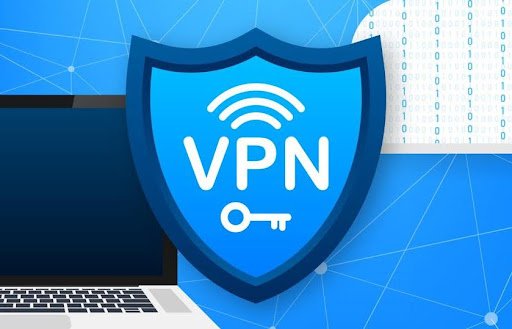You walk into a café, your phone finds a network named “Free_Coffee_Shop_WiFi_2025,” and without thinking, you connect. No password? Even better. But pause—because what feels convenient could be a gateway into your personal digital life. The truth? In 2025, public Wi-Fi isn’t just risky—it’s almost like walking down a dark alley while texting with your wallet wide open.
These open networks often lack encryption, making it easy for attackers to slide in unnoticed. Known as “man-in-the-middle” attacks, a hacker can sit between your device and the server you’re communicating with. Emails, passwords, bank details—everything becomes accessible.
According to a 2024 global cybersecurity report, 63% of mobile users connected to public Wi-Fi at least once a week, and 34% admitted they did so to check banking apps or make online purchases. Out of that group? Nearly 21% reported suspicious activity on their devices within the same month. Coincidence? Not likely.
Silent Threats: Not Just Hacking
You’d think a hacker tapping your internet line would be the worst-case scenario. But 2025 has other, more subtle demons.
Some malicious networks mimic legitimate ones. You think you’re connecting to “Starbucks_Guest”? It’s really “Starbuck5_Guest”—a clone built to trap your data. These networks don’t even need to breach your device directly. All they need is for you to click.
And there’s this: mobile privacy isn’t just about the apps you download or the sites you visit. Even Bluetooth and Wi-Fi signals broadcast your MAC address, letting snoopers track your movements from one hotspot to the next.
Then there’s malware. An innocuous connection today, and tomorrow your phone is sluggish, your battery draining fast. Why? Because a silent app is running in the background, siphoning data or mining crypto using your device.
Step 1: Understand the Enemy
Before you know how to stay safe, understand how attacks happen.
They’re quiet.
They don’t always ask permission.
What happens is this:
- You connect.
- The fake hotspot logs your keystrokes or redirects you to lookalike websites.
- You log in thinking it’s your email, but it’s theirs.
- They now have your password.
And if your phone is set to auto-connect to open networks, congratulations—you’ve just opened the back door to your digital life without even touching it.
Step 2: Simple Moves with Big Impacts
Let’s go through the fix-it checklist. Not the “download this complicated software and sacrifice your firstborn” type. Just actionable, real-world stuff.
Turn Off Auto-Connect
Seriously. Most phones have this feature on by default. In 2025, it’s not just outdated—it’s dangerous. Head into your Wi-Fi settings and uncheck that little “auto-join” box.
Use a VPN
Yes, that’s right. A Virtual Private Network. Old advice? Maybe, but VPN apps are still one of the most effective shields when you’re on public networks. Any user can set up VeePN free VPN on their smartphone or PC and protect themselves from data leaks. Think of VeePN as a privacy cloak that wraps your phone in encryption. It doesn’t matter who’s listening—what they hear is gibberish.
And before you say, “But it slows everything down,” know this: newer protocols like WireGuard are ridiculously fast. Barely noticeable speed drop, and the protection is priceless.
Forget Networks
Done with that airport connection? Make your phone forget it. Keeps it from automatically reconnecting next time.
Limit What You Do
Resist the temptation to check your bank account or send confidential files while sipping your latte. Use mobile data if it’s sensitive. Or better yet, wait.
App Permissions
While you’re at it, dig into your apps. Are they asking for access to your microphone, camera, contacts, and Wi-Fi settings? Red flag. You gave permission once—you can take it back.

The Human Factor: A Big Weak Spot
Phones don’t usually betray you. People do. Think of how often someone peers over your shoulder on the train. Or how a person can drop a rogue access point in a hotel lobby and label it “Hotel_WiFi_Guest.”
Phishing attacks are also evolving. In 2025, they often arrive disguised as two-factor authentication requests. Click the wrong link over a public connection, and boom—you’re compromised.
Always check URLs. Always. The difference between www.amazon.com and www.amaz0n.com is one letter—and the loss of your personal information.
Little Habits, Big Gains
Here’s a subtle one: update your software. You ignore the pop-ups, thinking they’re annoying. But they often contain critical patches for security flaws discovered just weeks before. The longer you wait, the more exposed you are.
And hey, if you’re still wary about using that free café Wi-Fi? You could do what many cybersecurity experts do—yes, this is where the casual repeat mention comes in—and keep a VeePN VPN running by default. Let it boot with your phone. Silent, invisible armor. You won’t even notice it’s there—until you’re glad it is.
2025 and Beyond: Mobile Privacy Is a Moving Target
It’s easy to assume that phones are smarter now, that the security’s baked in. And yes, manufacturers are making progress. Face recognition, encrypted storage, permission prompts—they help. But tech advances for hackers too.
A 2025 report from Mobile Security Alliance warned that new AI-powered phishing attacks had a 45% higher success rate than in 2023. Why? Because they adapt to your behavior. Your habits. Your click patterns.
In a world that’s connected 24/7, your digital hygiene has to evolve with the threats.
Public Wi-Fi is not inherently evil. It’s just a tool. But so is a scalpel—use it wrong, and someone gets cut.
So the next time your phone offers up that sweet “Free_WiFi_Here” signal, think. Pause.
What’s the cost of free?
